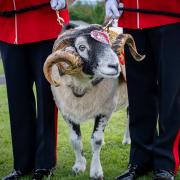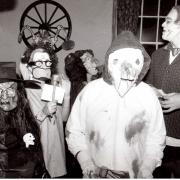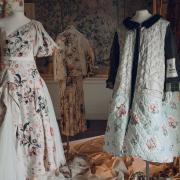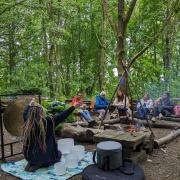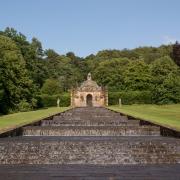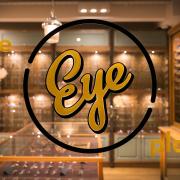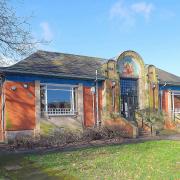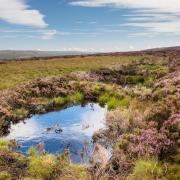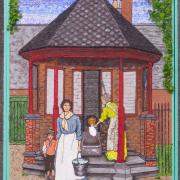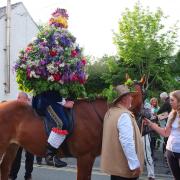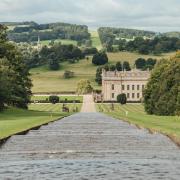Set back from the main street that meanders through the ancient Derbyshire town of Dronfield, there is a large, L-shaped building known as Dronfield Hall Barn.
Viewed from the footpath which leads to the all-glass entrance way which was grafted onto the building during an extensive restoration, the stone-clad structure has the appearance of a particularly handsome agricultural building.
But there is much more to this structure than meets the eye. The stone cladding masks a spectacular secret.
Inside the building, there are oak beams and king-post trusses which have been dated by dendrochronology investigations (analysis of tree-rings) to 1430.
These findings have led historians to speculate that the so-called ‘barn’ began life as a high-status, timber-framed medieval hall.
Given its date of origin, the building, which carries a Grade II* listing, was probably erected for the steward of Lady Alice Deincourt, a great aunt of Richard III and Edward IV, when she took out a lease on the Manor of Dronfield.

A CHEQUERED HISTORY
The barn has had a chequered history. In the 18th century, it became part of a hall farm owned by the Rotherham-Cecil Estate.
John Rotherham, a lead and millstone merchant, showed little respect for the barn’s illustrious origins when he decided to clad it in sandstone, thereby confining all evidence of its 15th-century timber-frame to the interior.
Later occupiers of the building included members of the Fisher family, who employed it to house livestock and agricultural implements.
They were followed by a company that inserted a breeze-block wall and a concrete floor in the barn when they used it to store building supplies and garden tools.
In 2004, the Rotherham-Cecil Estate was acquired by Sainsbury’s Supermarkets, who had been given permission to erect a large new superstore on the former estate.
However, the hall barn was saved from demolition because the supermarket chain decided to give it to the town, on condition that it be developed for the benefit of Dronfield’s citizens.

A WELCOME GIFT
This gift was welcomed by the many local people who had deep interest in local history and saw the barn as a significant part of Dronfield’s heritage.
There was also a realisation that the building, which stands on a pathway linking the supermarket to the heart of the town, had the potential to be a perfect community hub.
The Dronfield Heritage Trust was formed in 2007 to take on the daunting task of rescuing the barn, which had become semi-derelict by this time, and developing it into ‘a high specification heritage, arts and natural history centre’.
Thanks to generous donations and a successful bid to the Heritage Lottery Fund in 2012, over a million pounds was raised, eventually allowing restoration work to begin in earnest.

THE RESTORED BARN
The ground floor of the renovated building contains a coffee shop, supplemented by an outside seating area, where you are invited to ‘unwind in a historic setting’ and choose refreshments from a range of drinks, snacks, light bites, lunches, cakes and afternoon teas.
This floor also has a new extension containing meeting rooms and spaces suitable for exhibitions.
However, to discover the exciting secret hidden within the building, you will need to ascend steps located at the far end of the coffee shop.
This stairway gives access to the upper storey, where you will find yourself magically transported back in time as soon as you enter the beautifully restored medieval hall that makes up the entirety of this floor.
The pointed roof of the nave-like hall is supported by king posts (central vertical posts) and by an array of beams.
An indication of the meticulous way that the restoration of the building has been carried out is that missing beams have been replaced by wooden struts of a similar age obtained from a derelict barn in France.
A particularly fascinating feature in this room is the existence of some curved slots, which may have allowed a dais canopy to be hung above the Lord of the Manor’s seat at the high table.

This wonderful first-floor space can be hired for weddings, exhibitions, corporate events and activities such as arts workshops and yoga classes. Hung on one wall, there is a large quilt produced by a team of volunteers to tell the story of Dronfield.
On a recent visit, I encountered another team of volunteers. Some were making sure that the lawn at the front of the barn is kept neat, whilst others were engaged, at the other side of the building, in tending a medieval herb garden, a Tudor knot garden and a collection of plants representing garden design through the ages.
The obvious dedication and enthusiasm of these volunteers shows why the Dronfield community has been so successful in restoring and looking after one of the town’s finest heritage assets.
WHILST YOU ARE THERE
As Dronfield’s main street makes its meandering descent towards the valley of the river Drone, it passes many interesting sights, including:

The Peel Monument
The monument, which looks like a canopied well, was erected in 1846 as a tribute to Sir Robert Peel and as a commemoration of the repeal of the Corn Laws. Images of the distinctive structure are often used as a symbol for the town.
Dronfield Library
This building was constructed in 1710 as a manor house for Ralph Burton after he had bought the title of Lord of the Manor. Since 1967, it has served as one of the grandest looking public libraries you are ever likely to see.
Blue Stoops
The Blue Stoops, an ancient inn on the main street, offers ‘warm, cosy, rustic informality’. Its intriguing name is a reference to the practice of painting door posts blue to indicate the presence of an inn to travellers.

The Church of St John the Baptist
The impressive Church of St John the Baptist also has an intriguing feature. Its chancel has a huge east window that has vertical and horizontal tracery but no curves or diagonals whatsoever. Apparently, this unique arrangement is the result of a roof collapse which damaged the window so badly that only verticals and horizontals could be salvaged.
The Forge
The Forge, which was owned by Butler and Sons until the firm ceased trading in 1968, has been imaginatively converted into a centre that offers a ‘boutique shopping experience’, with a range of up-market shops set on various levels around a glass-topped atrium, which also includes a very popular coffee shop.




